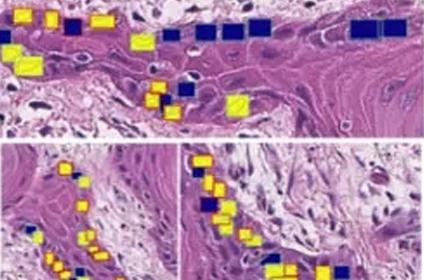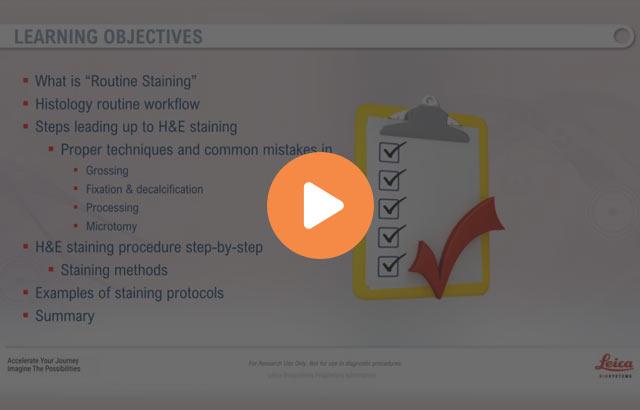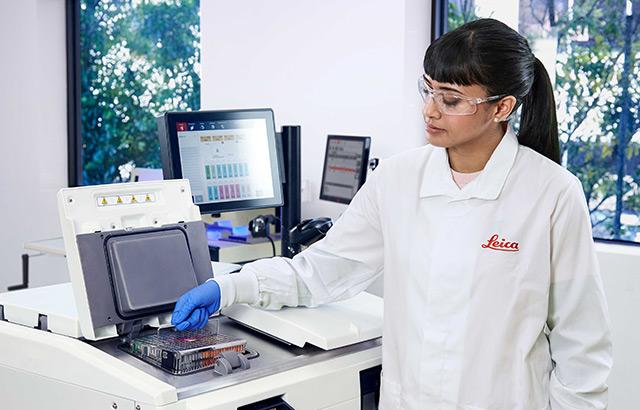Fundamentals of Hematoxylin and Eosin Staining

For characterizing tissue, the use of H&E is by far preferred for viewing cellular and tissue structure detail. The variation of stain intensity is often driven by the slide reviewers' learning experience and what they are comfortable seeing. Because this stain demonstrates a broad range of cytoplasmic, nuclear, and extracellular matrix features, nearly all teaching texts use H&E images. We continue to use this simple and essential stain today, which has remained unchanged for over a century.
Learning Objectives
- Identify the four components of an H&E stain
- Describe the critical elements of developing an H&E staining protocol
- Define three characteristics of an optimal and suboptimal H&E stain
In this webinar, Cindy Sampias, JD CT(ASCP)HTL, Applications Technical Team Lead - Core Histology at Leica Biosystems, provides an overview and discusses the practical uses of the Hematoxylin and Eosin stains gleaned from over 30 years of laboratory experience in the field of histology.
During this presentation, Cindy provides insights and shares fundamental concepts about H&E staining, including the components, types, and “how-to” elements of developing protocols. Cindy shares “tips and tricks” with the audience on performing H&E staining optimizations and concludes by describing best practice examples of what to look for in optimal and suboptimal H&E stains.
For Research Use Only. Not for Use in Diagnostic Procedures.
About the presenter

Cindy Sampias is a board certified Cyto- and Histo-technologist. With more than 25 years of experience, she is a guest speaker at histology and cytology meetings around the country. She is a technical author for Media Lab, publishing a variety of technical courses and sharing best practices in histology.
Related Content
Leica Biosystems content is subject to the Leica Biosystems website terms of use, available at: Legal Notice. The content, including webinars, training presentations and related materials is intended to provide general information regarding particular subjects of interest to health care professionals and is not intended to be, and should not be construed as, medical, regulatory or legal advice. The views and opinions expressed in any third-party content reflect the personal views and opinions of the speaker(s)/author(s) and do not necessarily represent or reflect the views or opinions of Leica Biosystems, its employees or agents. Any links contained in the content which provides access to third party resources or content is provided for convenience only.
For the use of any product, the applicable product documentation, including information guides, inserts and operation manuals should be consulted.
Copyright © 2024 Leica Biosystems division of Leica Microsystems, Inc. and its Leica Biosystems affiliates. All rights reserved. LEICA and the Leica Logo are registered trademarks of Leica Microsystems IR GmbH.


